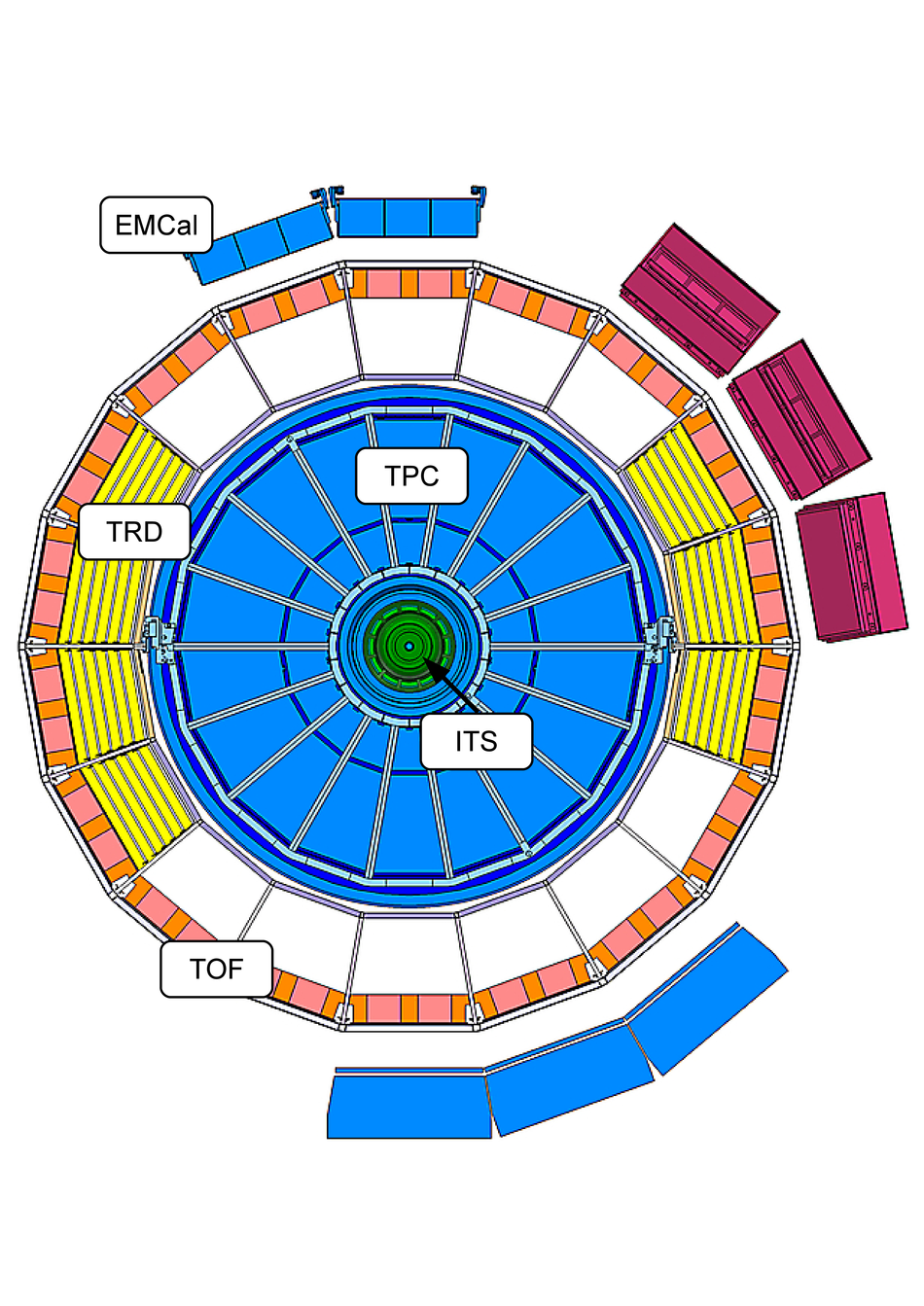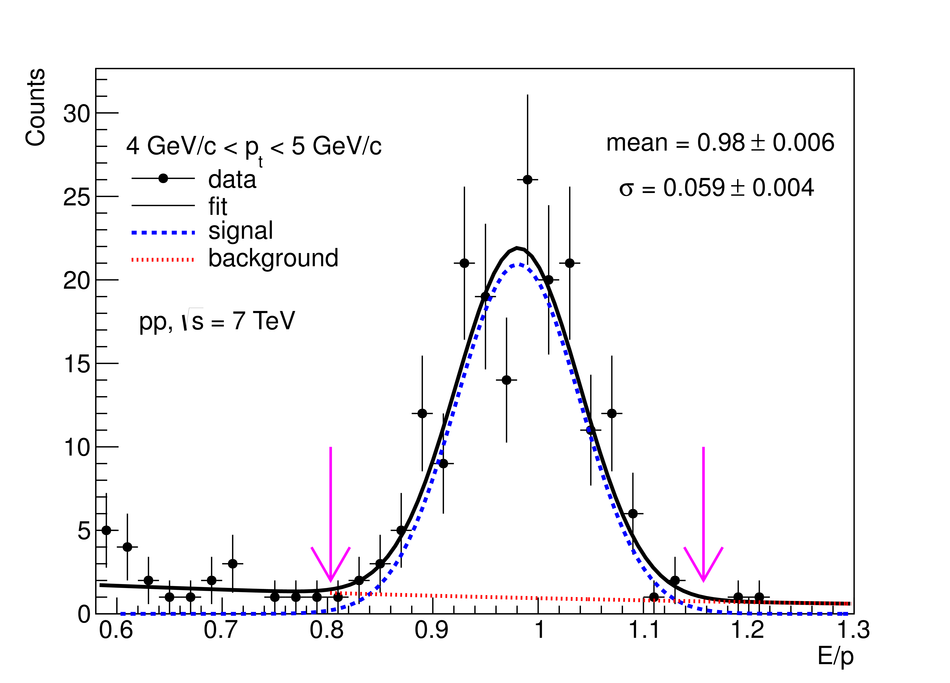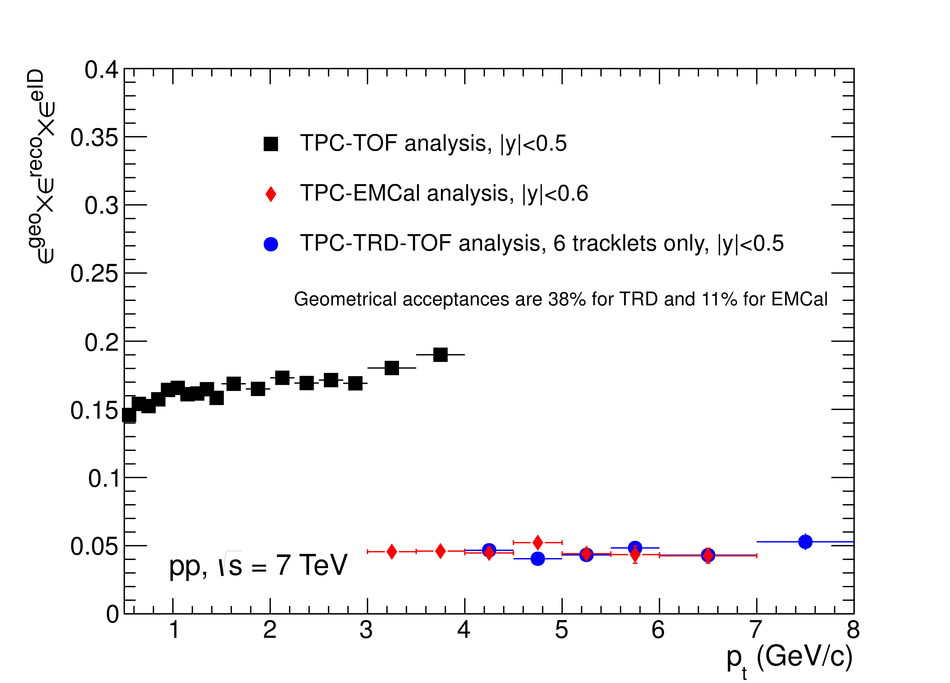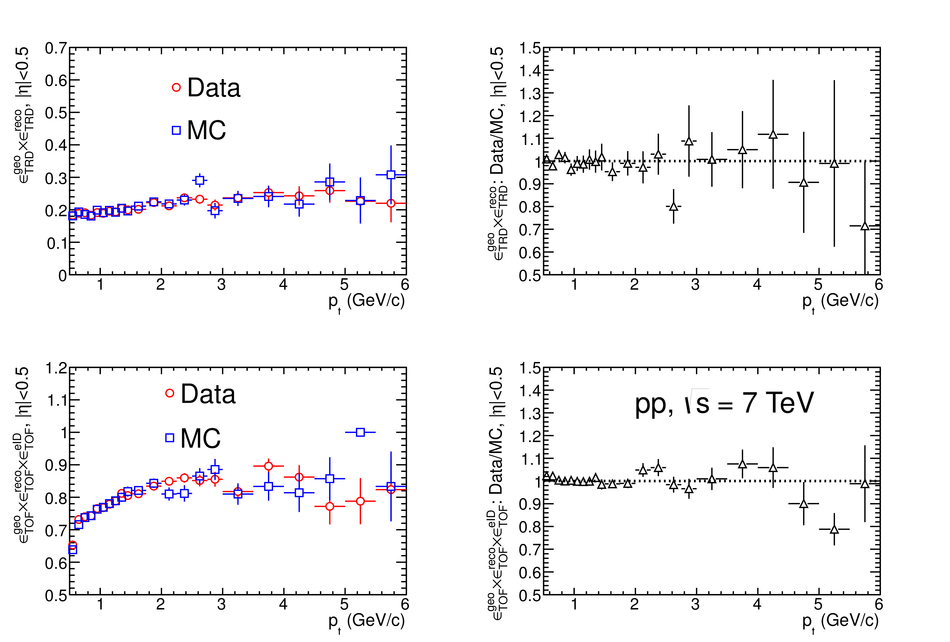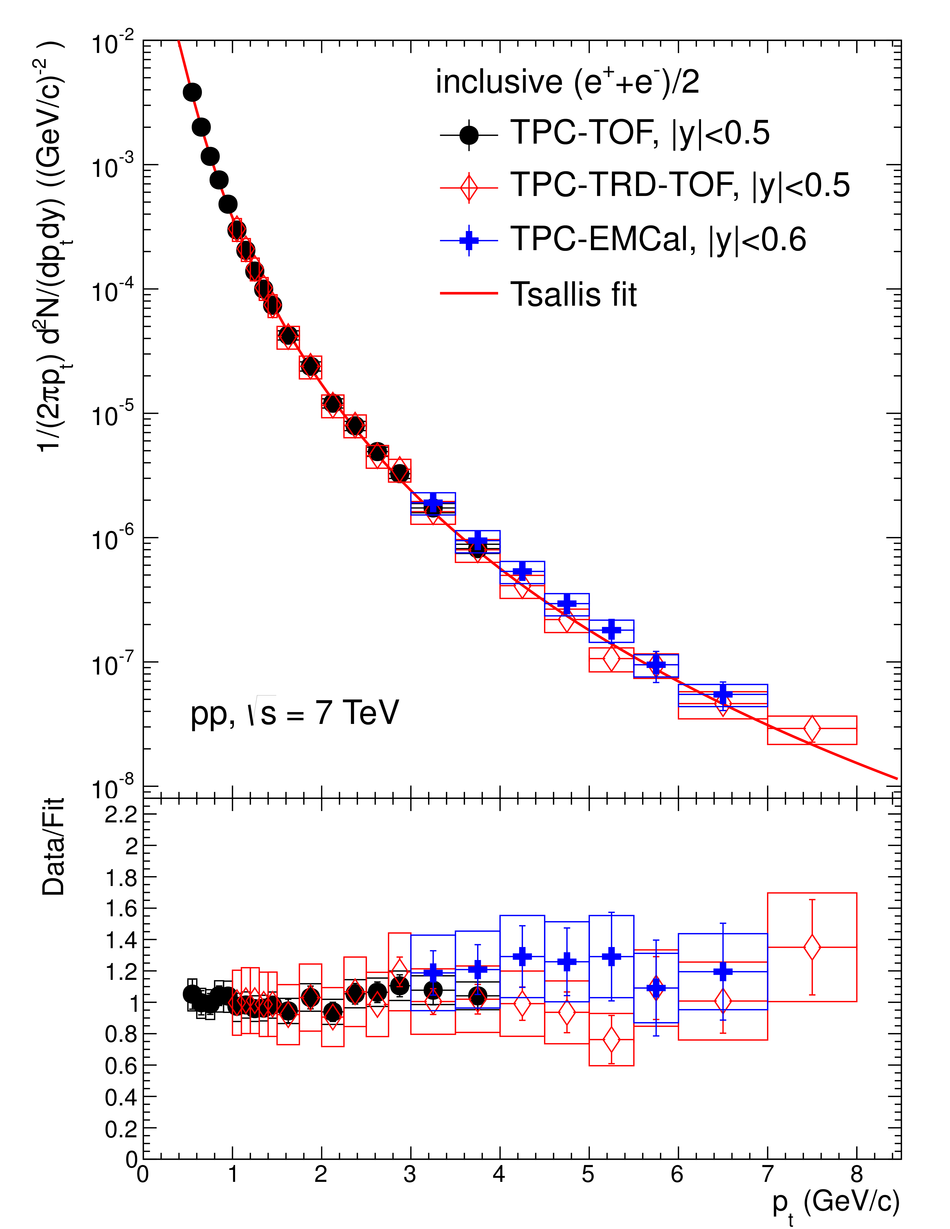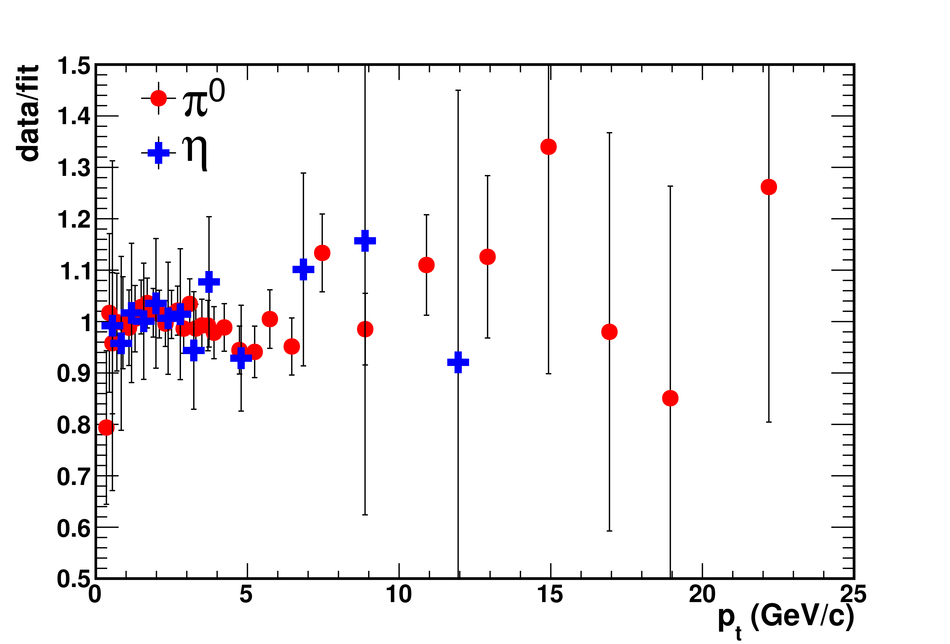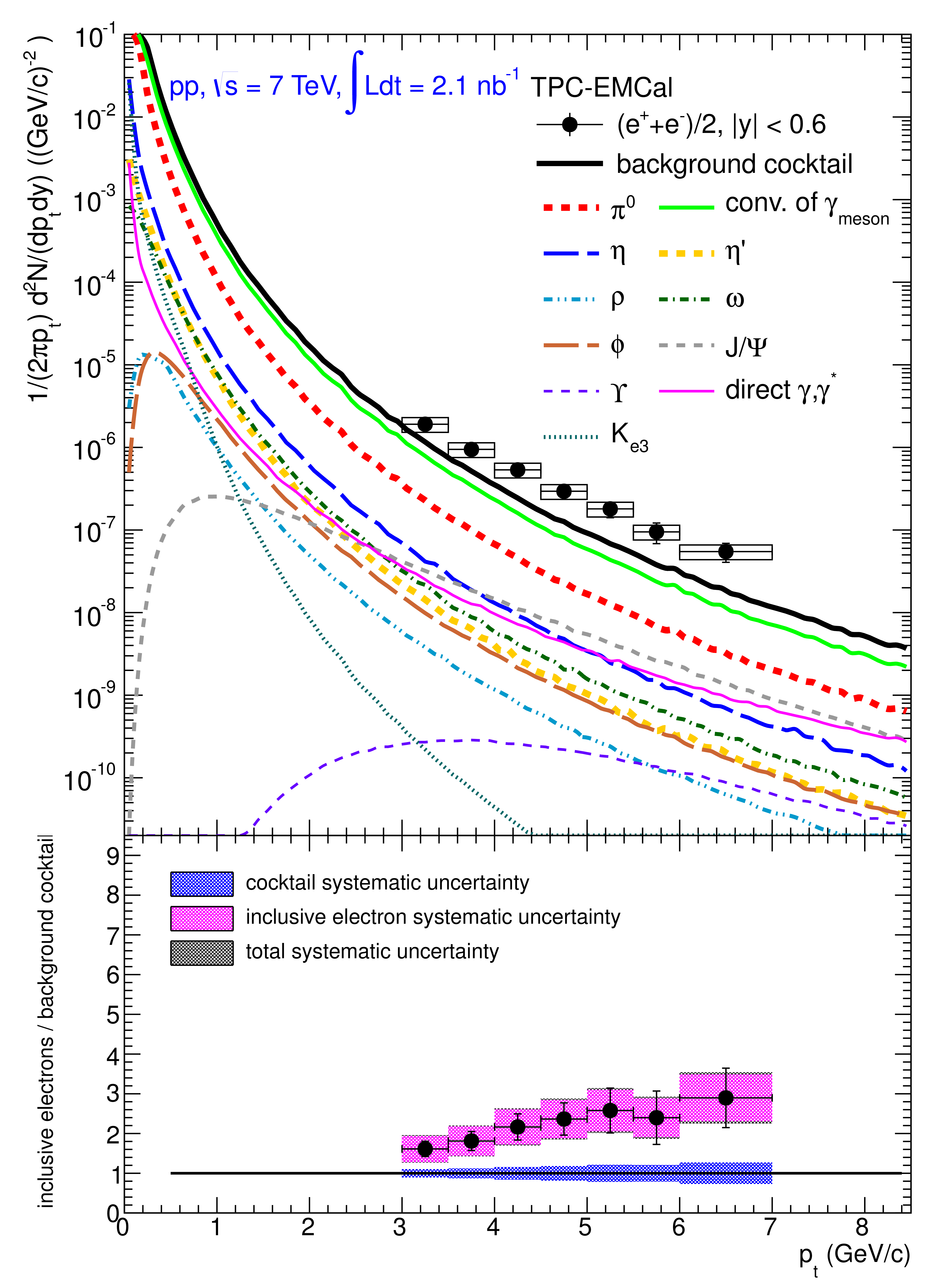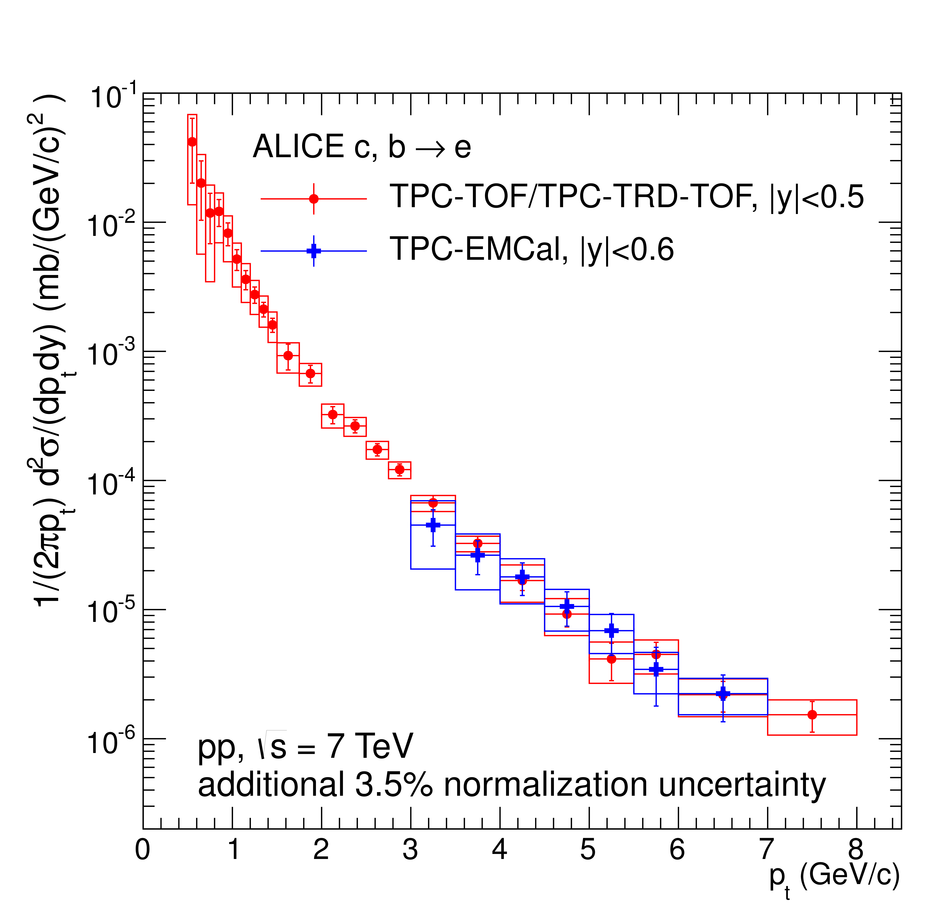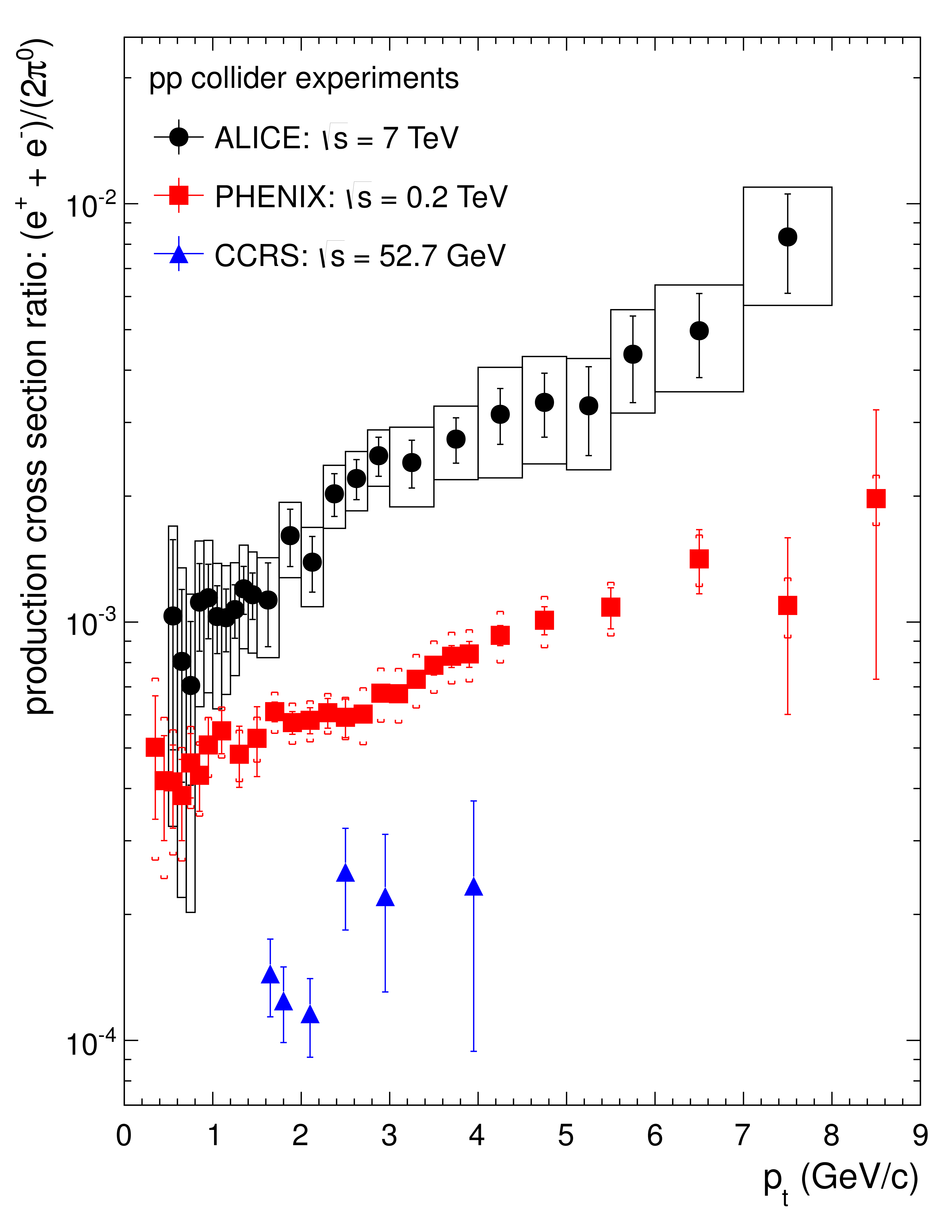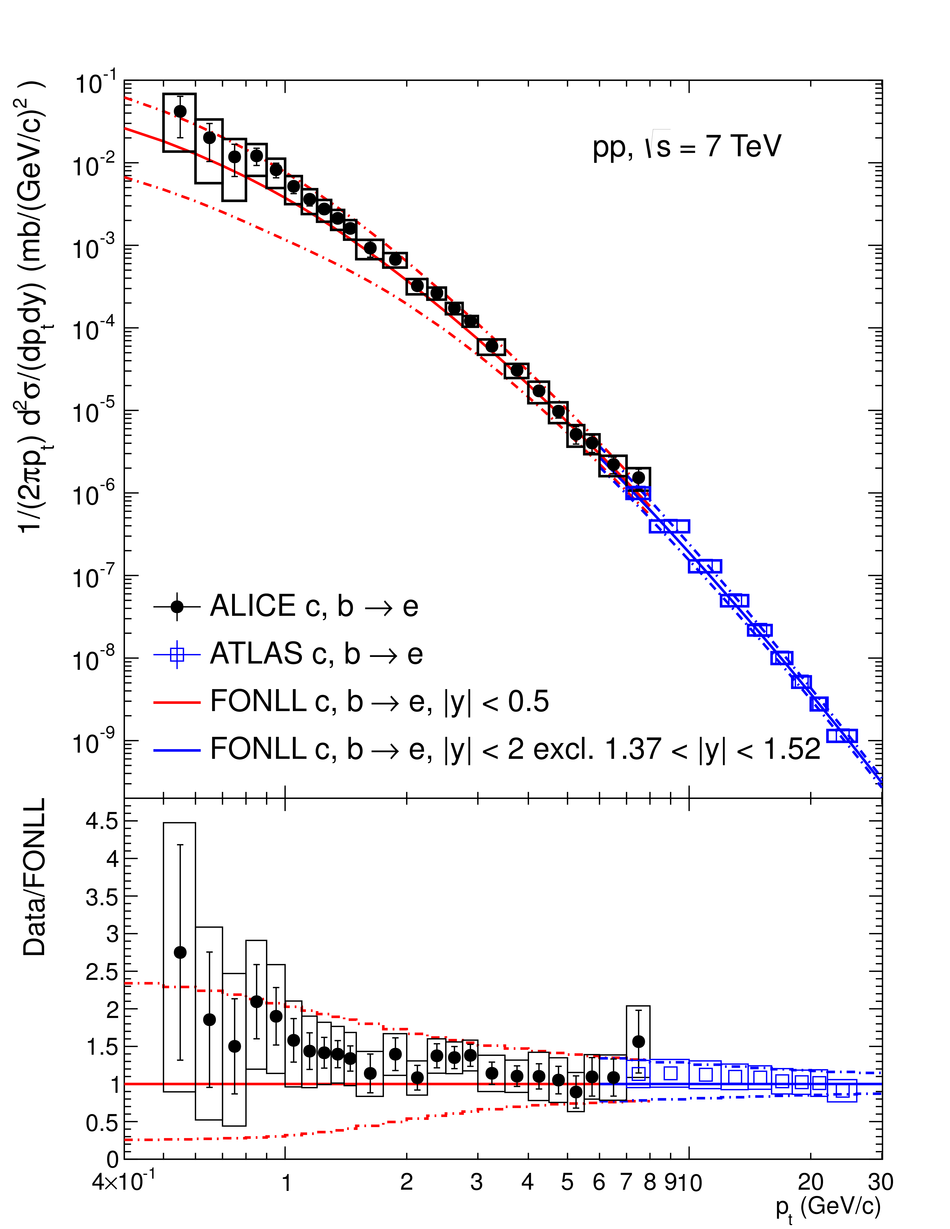The differential production cross section of electrons from semileptonic heavy-flavour hadron decays has been measured at mid-rapidity ($|y| <~ 0.5$) in proton-proton collisions at $\sqrt{s} = 7$ TeV with ALICE at the LHC. Electrons were measured in the transverse momentum range 0.5 < $\pt$ < 8 GeV/c. Predictions from a fixed order perturbative QCD calculation with next-to-leading-log resummation agree with the data within the theoretical and experimental uncertainties.
Phys. Rev. D 86 (2012) 112007
HEP Data
e-Print: arXiv:1205.5423 | PDF | inSPIRE
CERN-PH-EP-2012-131

